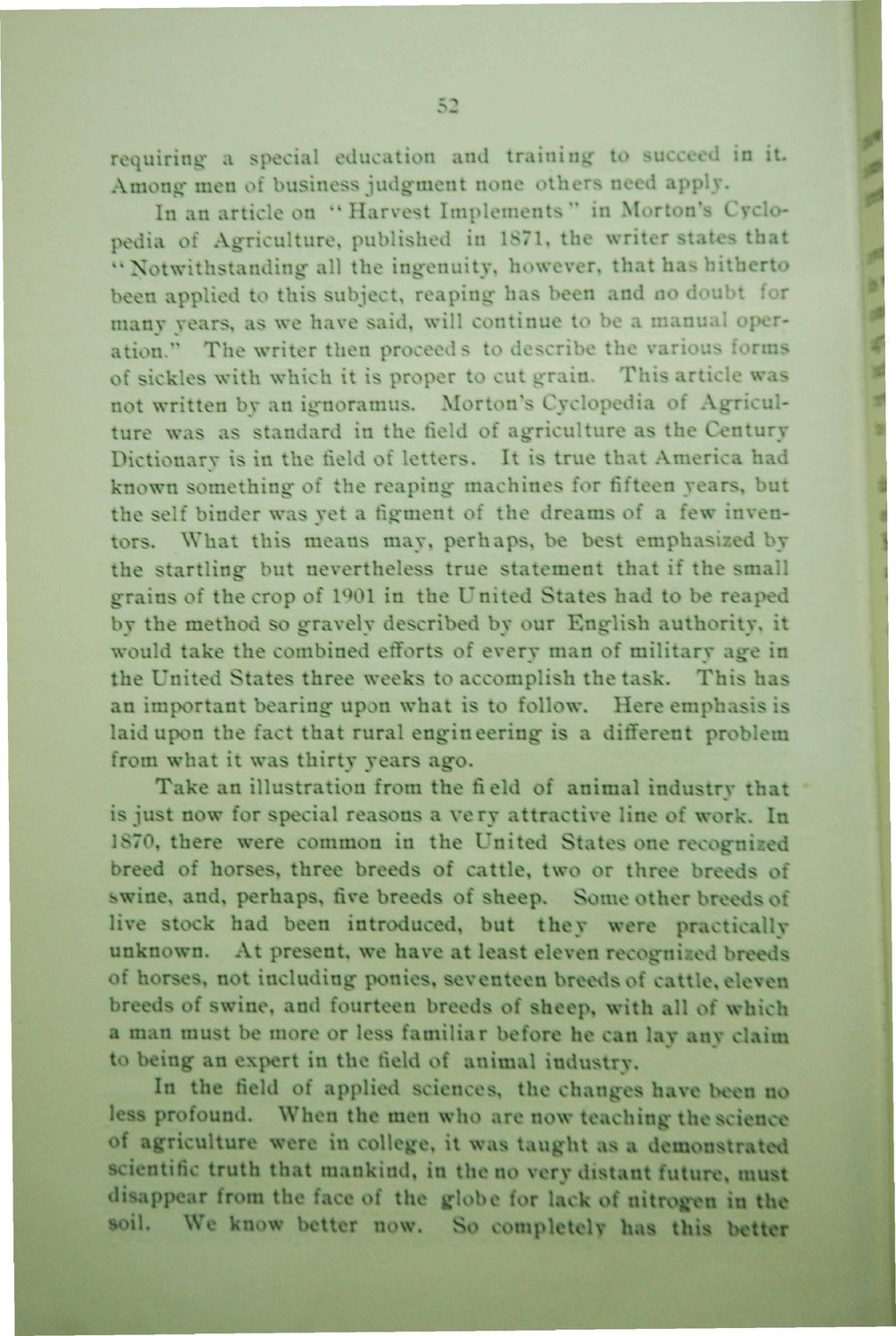| |
| |
Caption: Dedication - Ag Building
This is a reduced-resolution page image for fast online browsing.

EXTRACTED TEXT FROM PAGE:
requiring a special education and training to succeed in it. Among* men of business judgment none others need apply. In an article on 44 Harvest Implements n in Morton's Cyclopedia of Agriculture, published in 1871, the writer states that "Notwithstanding all the ingenuity, however, that has hitherto been applied to this subject, reaping has been and no doubt for many years, as we have said, will continue to be a manual operation." The writer then proceeds to describe the various forms of sickles with which it is proper to cut grain. This article was not written by an ignoramus. Morton's Cyclopedia of Agriculture was as standard in the field of agriculture as the Century Dictionary is in the field of letters. It is true that America had known something of the reaping machines for fifteen rears, but the self binder was yet a figment of the dreams of a few inventors. What this means may, perhaps, be best emphasized by the startling but nevertheless true statement that if the small grains of the crop of 1901 in the United States had to be reaped by the method so gravely described by our English authority, it would take the combined efforts of every man of military age in the United States three weeks to accomplish the task. This has an important bearing upon what is to follow. Here emphasis is laid upon the fact that rural engineering is a different problem from what it was thirty years ago. Take an illustration from the field of animal industry that is just now for special reasons a very attractive line of work. In 1870, there were common in the United States one recognized breed of horses, three breeds of cattle, two or three breeds of swine, and, perhaps, five breeds of sheep. Some other breeds of live stock had been introduced, but they were practically unknown. At present, we have at least eleven recognised breeds of horses, not including ponies, seventeen breeds of cattle, eleven breeds of swine, and fourteen breeds of sheep, with all of which a man must be more or less familiar before he can lay any claim to being an expert in the field of animal industry. In the field of applied sciences, the changes have been no less profound. When the men who are now teaching the science of agriculture were in college, it was taught as a demonstrated scientific truth that mankind, in the no very distant future, must disappear from the face of the globe for lack of nitrogen in the •oil. We know better now. So completely has this better
| |